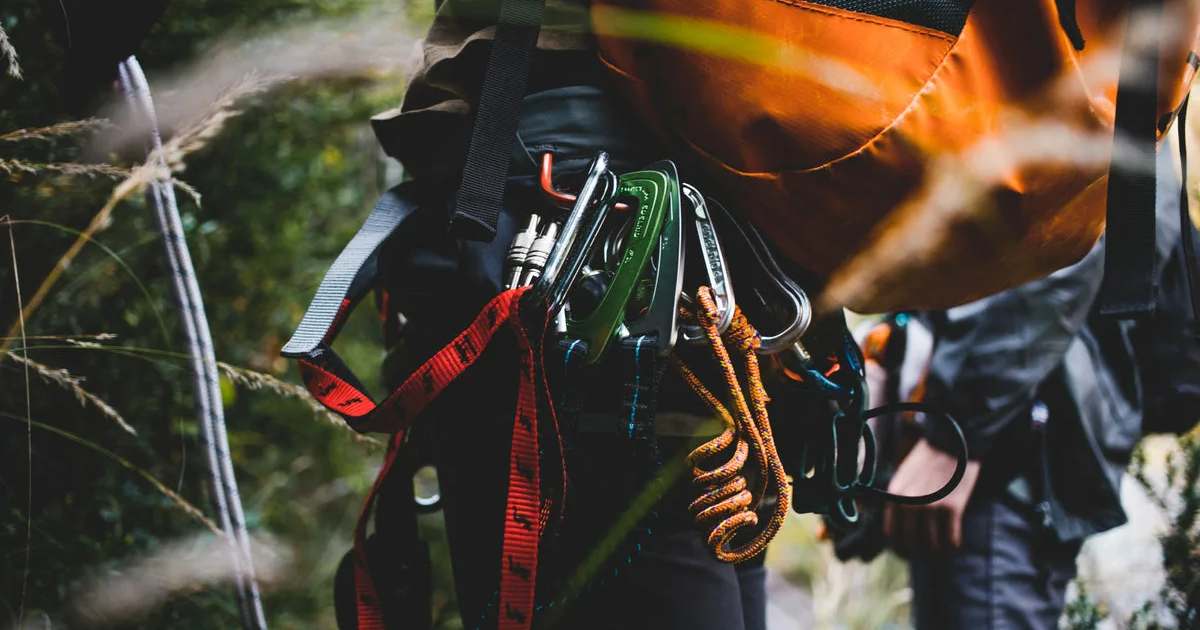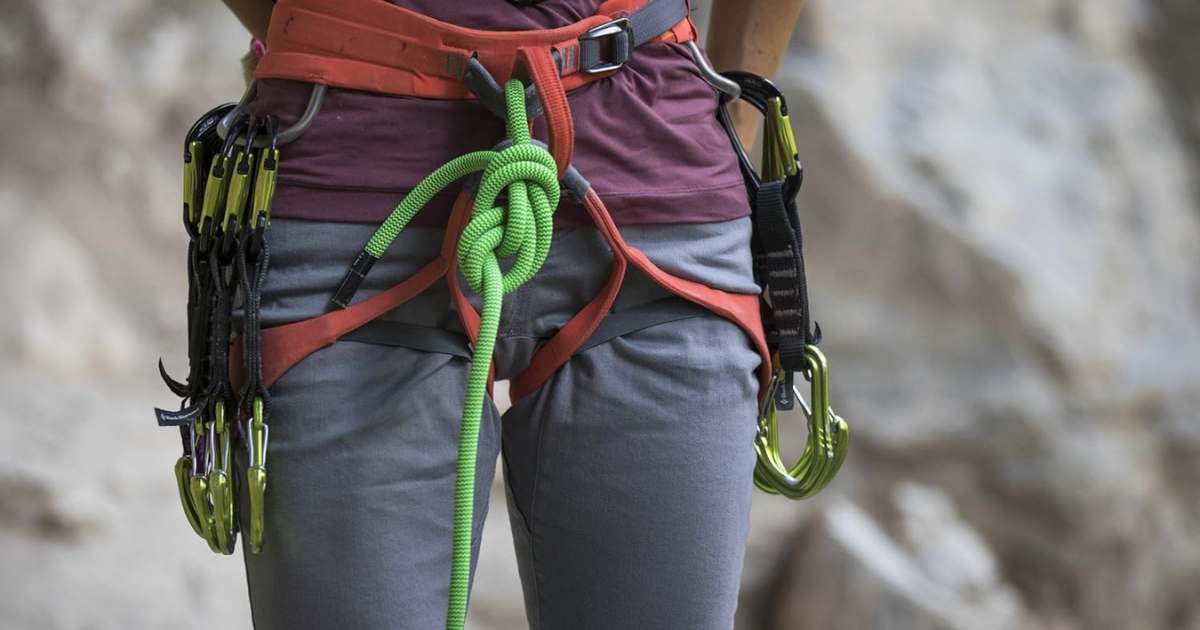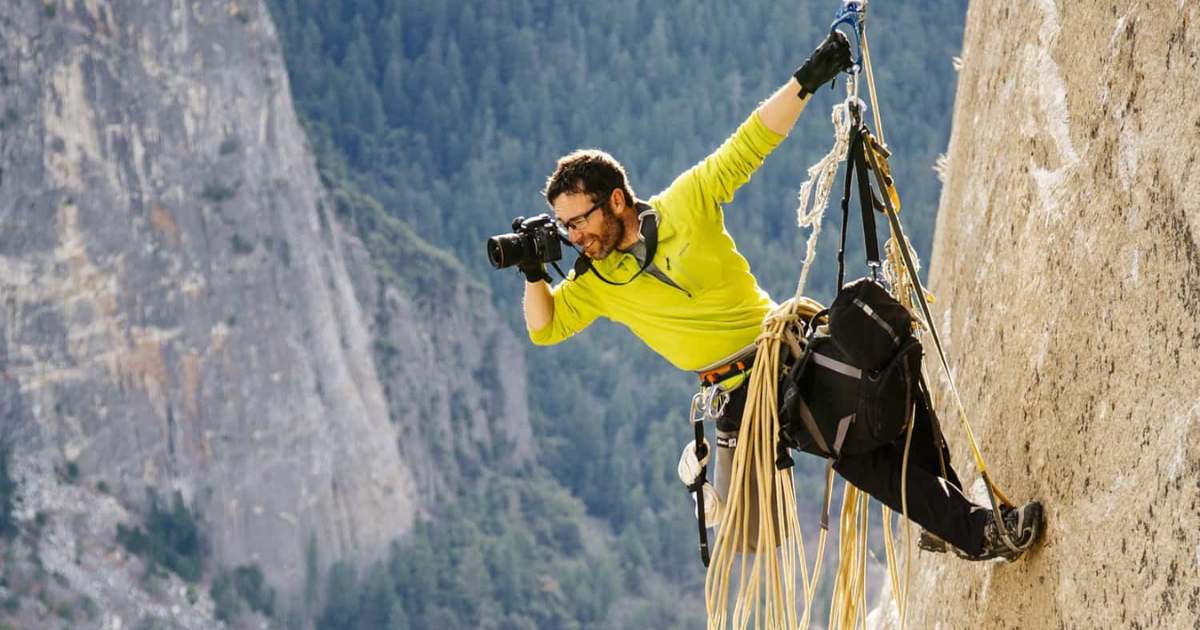Rock climbing harnesses are an essential piece of safety equipment for rock climbers. They are worn around the pelvis and legs and are used to secure a climber to their rope. Harnesses distribute the force of a fall across the strong bones of the hips and legs, allowing the ropes and other hardware to safely stop a climber’s fall. Quality harnesses are constructed out of durable materials and are designed for maximum comfort during long climbing days.
“Rock Climbing Harness” – two words that can make the difference between life and death for a rock climber. A good harness needs to strike a balance between comfort, functionality, and safety. It needs to be comfortable enough to wear for hours during a big wall climb, functional enough to accommodate all necessary climbing gear, and safe enough to catch a climber in the event of a fall. When lives are on the line, climbers need to choose their harnesses wisely.
There are many different types of harnesses available for rock climbers today. Key features to look for include sufficient gear loops to rack hardware, adjustable leg loops to customize the fit, and high-quality buckles that won’t fail under load. Lightweight foam and mesh panels provide ventilation and all-day comfort. While harnesses come in many shapes and sizes, they all serve the same critical purpose – to save a climber’s life in the event of a fall.
What is a Rock Climbing Harness?
A rock climbing harness is a network of straps that wrap around the pelvis and legs to safely support a climber’s body on the rock face and in the event of a fall. Harnesses provide an attachment point for securing climbing ropes and gear.
Unlike a regular belt that sits at the waist, climbing harnesses sit at the level of the hips and legs to better distribute force across the strong bones of the lower body. The snug fit allows the harness to keep the climber’s body in an upright position during a fall instead of flipping upside-down.
There are two main types of rock climbing harnesses:
Sport Harness: Used for shorter sport or gym climbing. They have minimal gear loops and lightweight construction.
Traditional Harness: Used for longer multi-pitch traditional climbing. They have more padding, wider leg loops, and multiple heavy-duty gear loops.
Harness Parts and Features
All climbing harnesses share some common components and features:
Waist Belt: The padded belt that wraps around the waist and hips. Often adjustable with a buckle.
Leg Loops: Two adjustable loops that go around each thigh and connect to the waist belt. Can be rigid or softly padded.
Gear Loops: Made of reinforced webbing or rope, gear loops hang from the waist belt to carry carabiners, quickdraws, rappel devices, etc.
Buckles: Used to adjust the leg loops and waist belt. High quality aluminum allow buckles are light and strong.
Tie-in Points: Strong reinforced loops for connecting climbing ropes. Usually 1 on front and 1-2 in back.
Belay Loop: A strong webbing loop where multiple anchor points meet. Used to attach belay devices.
Haul Loop: A second reinforced tie-in point for hauling up ropes or gear.
How to Choose the Right Rock Climbing Harness
With so many harness options available, it can be tricky to select the right one. Here are the key factors to consider:
Type of Climbing: Will you be sport climbing at the gym or trad climbing on a multi-pitch wall? Gym harnesses are more lightweight while big wall harnesses have more features.
Comfort: Try on different harnesses to find one offers a snug but comfortable fit. Look for ample padding on leg loops and waist belt.
Gear Loops: Count the quantity and examine the durability. You’ll need more for traditional multi-pitch climbing.
Adjustability: Test that the leg loops and waist belt adjust sufficiently to get a perfect individualized fit.
Buckles: Ensure all weight-bearing buckles are made of metal not plastic. Double back buckles offer more security.
Tie-in Points: Check their strength and that the harness has the number you need for lead climbing or hauling.
Size/Fit: Harnesses come in a range of sizes from XS to XL accommodating different body shapes and sizes.
How to Properly Fit Your Rock Climbing Harness
Getting the right fit from your harness is crucial for comfort and safety. Follow this process when first putting on your harness:
- Hold harness by the waist belt and shake it to allow all straps to fall into place.
- Step into the leg loops one at a time, pulling them up to your lower thigh area.
- Pull waist belt up and around your hips until it’s centered at hip level. Buckle waist belt, tightening the forward adjuster first, then the rear.
- Tighten leg loop adjustable straps evenly on both sides. Loops should fit snug but not dig into thighs.
- Test that you can slip two fingers under waist belt and leg loops, adjusting as needed.
- Check that tie-in points, gear loops, and belay loop sit centered on hips and within easy reach.
- Always double back waist belt webbing through the buckle for safety.
Having a properly fitted harness ensures weight distribution across the hips and legs instead of the waist. It should feel very secure but not restrictive. Take the time to get the adjustments dialed in.
How to Use Your Rock Climbing Harness Safely
To get the most out of your harness, you need to use it correctly. Here are some key usage tips:
Double check buckles: Visually and physically check that all buckles are fully locked, tightened, and doubled back before every use.
Tie the knot tight: When tying into the harness, ensure your figure 8 follow through knot is snug against the tie-in point. No looseness.
Position tie-in point: For most climbing, tie into the front tie-in point. Use rear points for hauling or descending.
Keep it neat: Don’t allow ropes, quickdraws, or slings to accumulate around tie-in points. This creates entanglement hazards.
Evenly load gear loops: Distribute gear evenly across multiple loops. Don’t cluster too much in one place.
Clean after use: Rinse harness with clean water after dusty or muddy climbs to prevent premature wear.
Store properly: Keep harness away from chemicals, sunlight, excessive heat, and anything sharp that could damage the materials.
Inspect frequently: Check for signs of wear including tears, fraying, and damaged stitching. Retire if compromised.
Replace as needed: An older, worn out harness won’t protect you as well as a new one. Replace at first sign of deterioration.
Types of Rock Climbing Harnesses
With an overview of harness basics under your belt, let’s look at the common styles and types of rock climbing harnesses available today.
Sport Climbing Harnesses
Sport climbing harnesses are designed for gym climbing and single or multi-pitch face climbing where routes are pre-equipped with fixed bolts. They are lightweight, minimalist, and comfortable for long days.
Features:
- Light padded waistbelt & leg loops
- 1-2 low profile gear loops
- Single front tie-in point
- Sleek, flexible design
- Great breathability
Good for gym climbing, sport climbing, face climbing.
All-Day Comfort Harnesses
All-day comfort harnesses aim to provide superior comfort and breathability for long multi-pitch traditional climbs. They have plush padding and ventilation.
Features:
- Heavy foam molded waistbelt & leg loops
- Mesh lining increases breathability
- Multiple gear loops & haul loop
- Designed for exceptional all-day comfort
Ideal for trad multi-pitch climbs.
Big Wall & Aid Climbing Harnesses
Big wall harnesses are specialized for multi-day big wall climbs and aid climbing. They excel at carrying large racks of gear comfortably.
Features:
- Robust padded waistbelt and leg loops
- Large gear loops and multiple haul loops
- Built-in pockets and slots for aid climbing gear
- Streamlined design won’t snag on wall features
- Very durable for prolonged use
Perfect for big wall, aid climbing, and outdoor multi-pitches.
Women’s Specific Harnesses
Many manufacturers offer harnesses built specifically for the female anatomy. They have a slimmer waistbelt, curved leg loops, and lighter materials.
Features:
- Contoured waistbelt & shaped leg loops
- Lighter weight breathable materials
- Gear loops sized for smaller gear
- Designed for wider hips and narrower waist
Optimized for the female climber’s build. Great comfort.
Kids Harnesses
Kid’s harnesses allow children to start climbing safely. They come in very small sizes and often have fun colors and prints.
Features:
- Available in toddler to youth sizes
- Padded for comfort, tested for safety
- Easy to take on and off
- Vibrant colors and fun graphics
- Adjustable leg loops grow with child
Gets kids started climbing the right way.
Mountaineering Harnesses
Mountaineering harnesses are extremely light and packable for alpine adventures. They ditch some gear loops for ultra-lightweight.
Features:
- Featherlight fabric or mesh construction
- Minimal gear loops
- Easy to pack away into a bag or pocket
- Solid, simple design
Built light for fast & light alpine climbing.
With so many styles and options, you can dial in a harness perfectly suited to your preferred climbing discipline and body type. Try some on and test them out to make the best choice.
When to Replace Your Rock Climbing Harness
No matter how careful you are, every rock climbing harness will eventually reach the end of its lifespan and need replacement. But when is it time to retire your trusty old harness and upgrade to a new one?
Here are the signs to watch out for:
Age: Harnesses should be replaced every 5-10 years from manufacturing date regardless of use. Materials degrade over time.
Condition: Inspect closely for frayed stitching, worn webbing, cuts, and fuzzy areas which indicate internal damage.
Modifications: Any alterations, removed stitching, or damaged hardware warrant immediate replacement.
UV Damage: Fading, bleached out colors, or cracking rubber/plastics mean its time for a new harness.
Mysterious Falls: If you take repeated falls on lead for no apparent reason, your harness may be to blame.
Weight Loss/Gain: If your harness is now too loose or uncomfortably tight due to body weight changes.
Heavy Use: If you climb 3-5 days per week or take frequent lead falls, plan to replace yearly.
Accident Fall: Even if it looks OK, replace your harness after taking any major fall.
Buckles: bent, damaged, or malfunctioning buckles require immediate replacement.
Tie-in Points: Any deformation, cracks, or mushrooming of the tie-in points.
Leg Loop Padding: Compressed, cracked, or flattened leg loop padding will reduce comfort and safety.
A rock climbing harness is not worth risking your life over. At the first sign of any wear, shell out the money for a new, name-brand harness rated for climbing. It’s the cheapest life insurance you can buy.
FAQ’s
What is rock climbing with a harness called?
Climbing with a harness is simply called rock climbing.
What is a Type C harness?
A Type C harness is a sit harness, the most common type used for climbing, mountaineering, and various rope activities.
What harness does Alex Honnold use?
Alex Honnold primarily uses the Black Diamond Solution Harness. He even has his own limited-edition version with his signature on it.
How should a rock climbing harness fit?
A climbing harness should fit snugly over your hips (not down!), allowing movement but not sliding down with a 2-finger gap max. Leg loops snug, hand fits between loop and leg. ♀️
How do I choose my first climbing harness?
Consider your climbing style (gym, sport, trad) and prioritize comfort with a snug fit at the hips and leg loops. Test hanging in the harness if possible! ♀️
Conclusion
A rock climbing harness is important safety gear that every climber needs to use properly. It holds you to the rope so you don’t fall. The harness wraps around your legs and hips tightly but not too tight. It should fit you just right. There are many kinds of harnesses for different climbs. Take care of your harness so it lasts a long time.
Check it for damage before and after you climb. Wash your harness when it gets dirty so it stays safe. Replace old harnesses so they don’t break. With a good harness, you can climb safely for many years. The harness helps the rope catch you if you fall. Be smart and wear your harness to have fun climbing without getting hurt.












